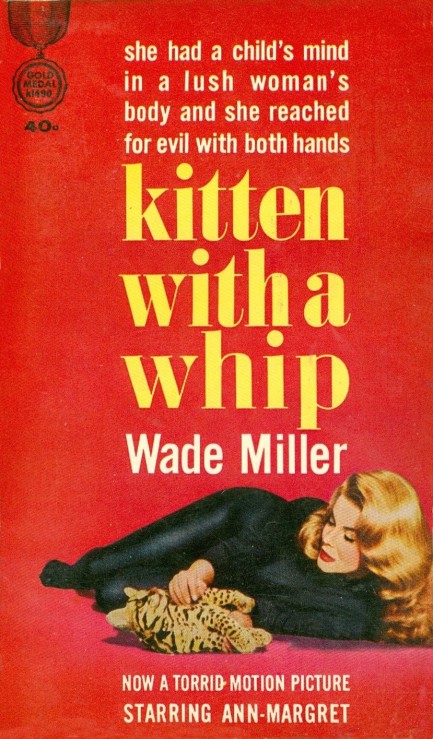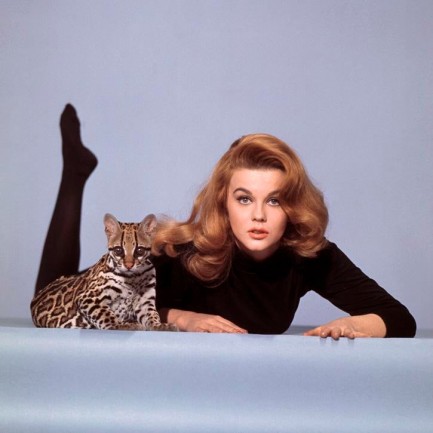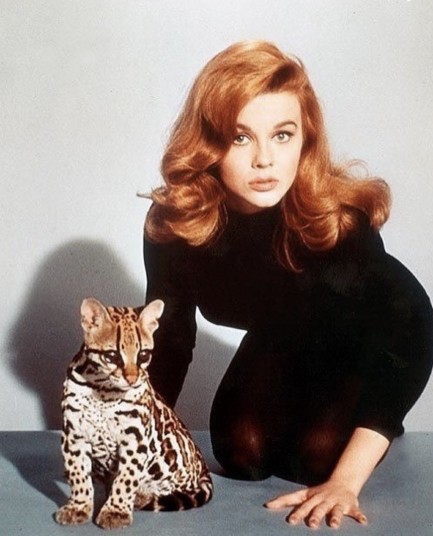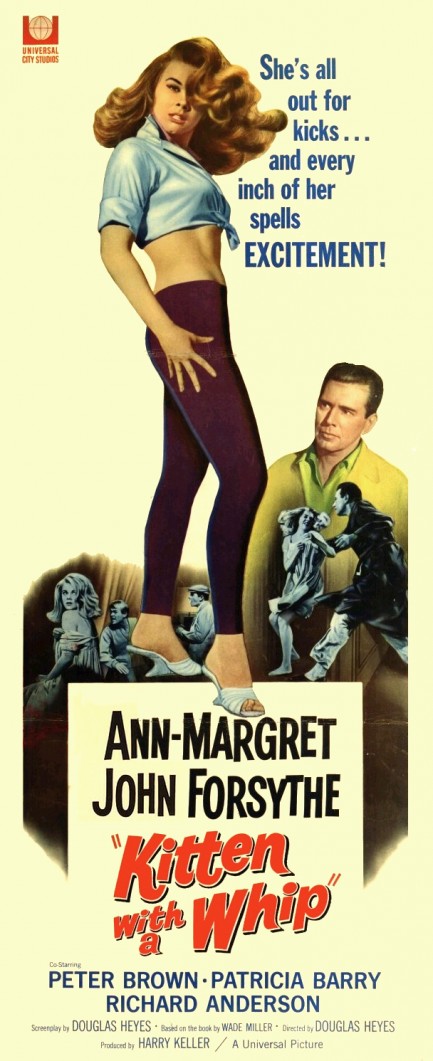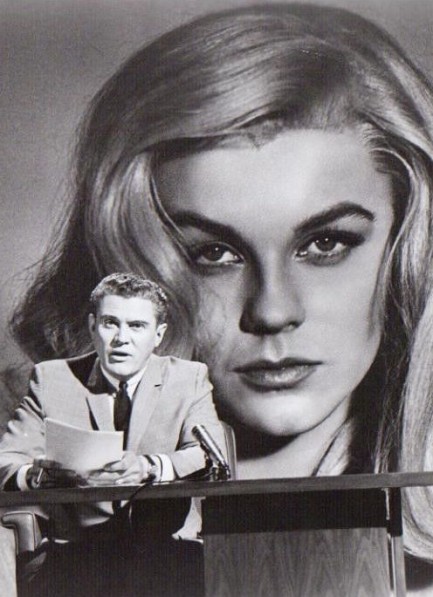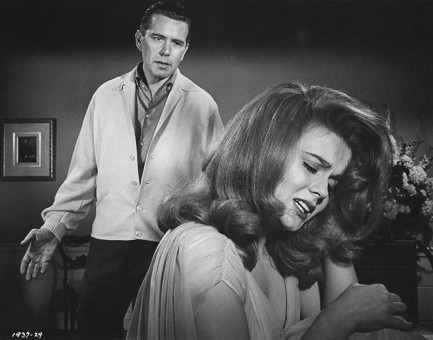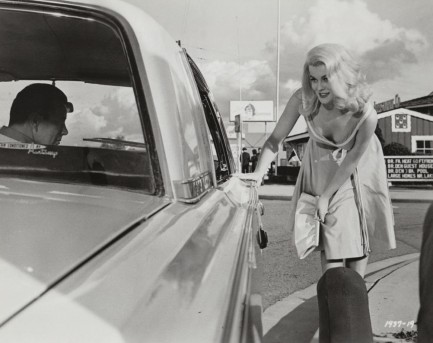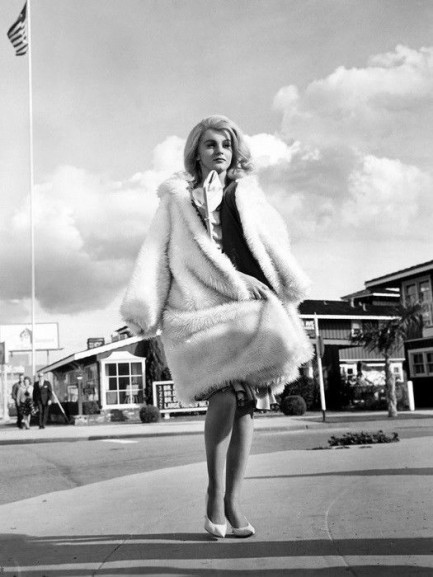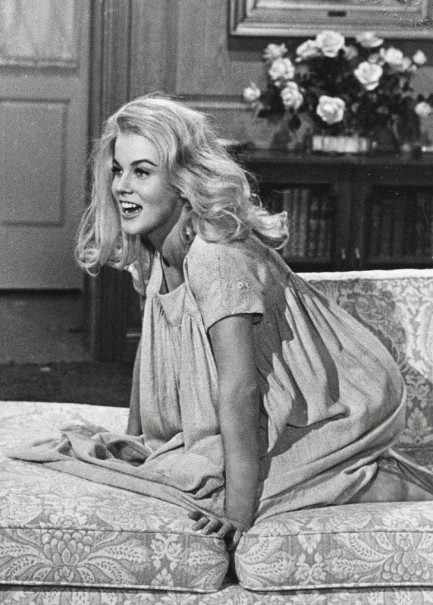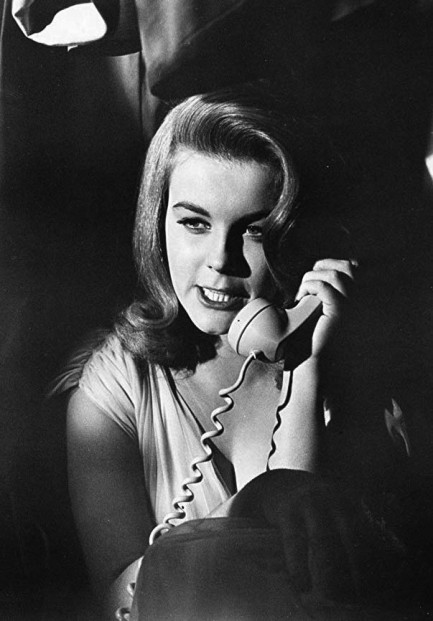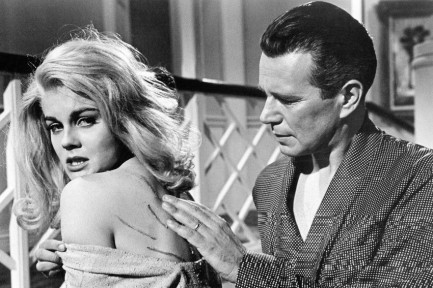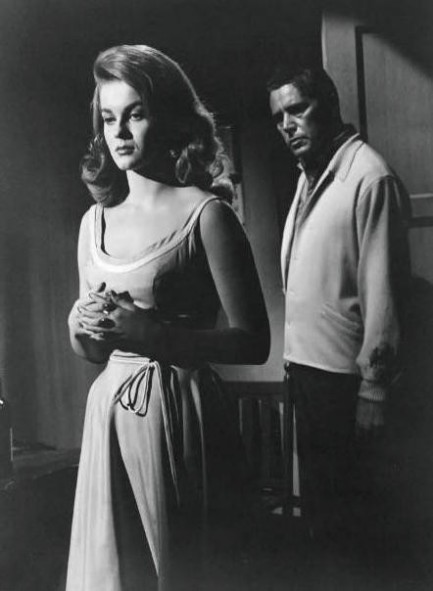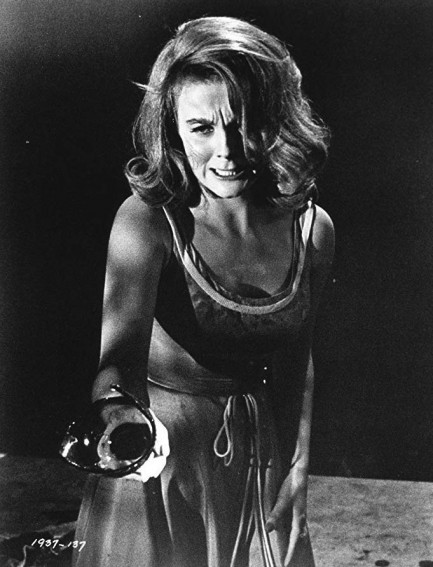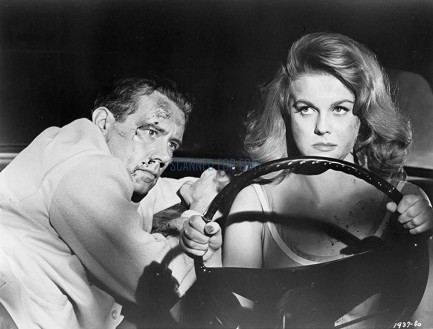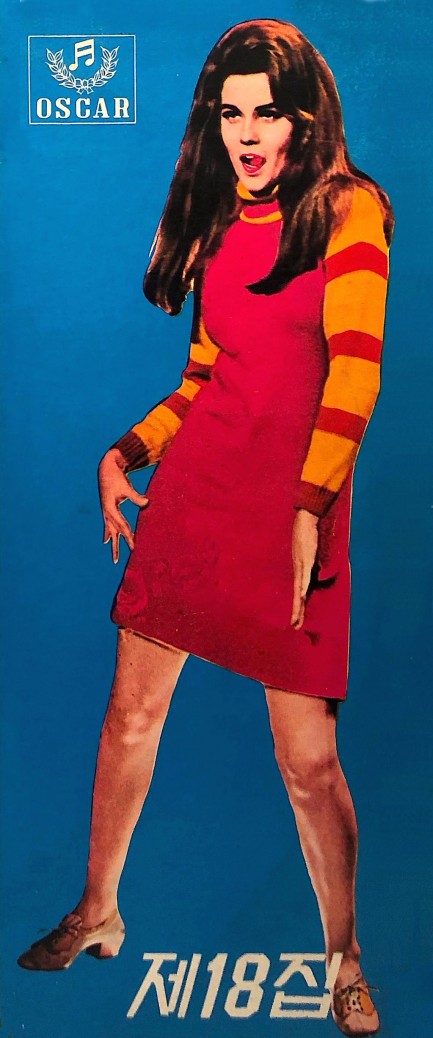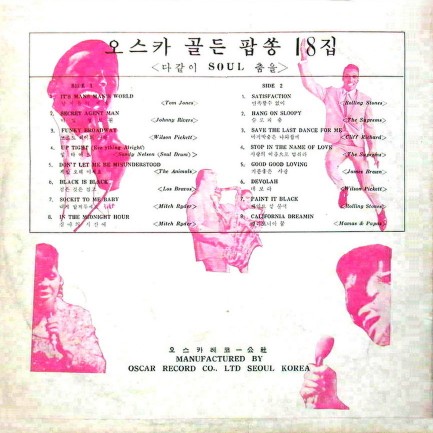 Not to complain, oh great master thief, but all you've stolen lately has been booze money out of my purse. 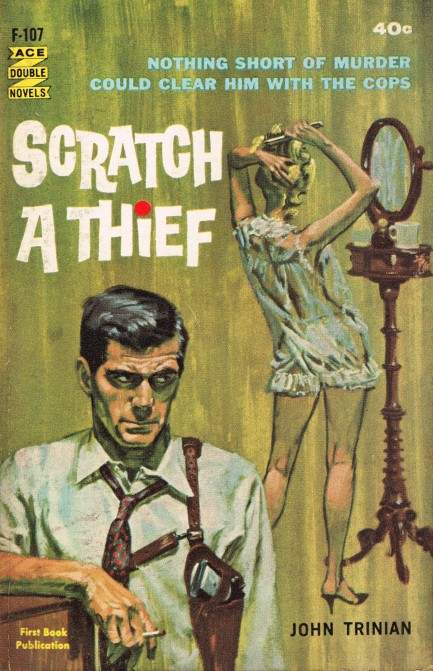 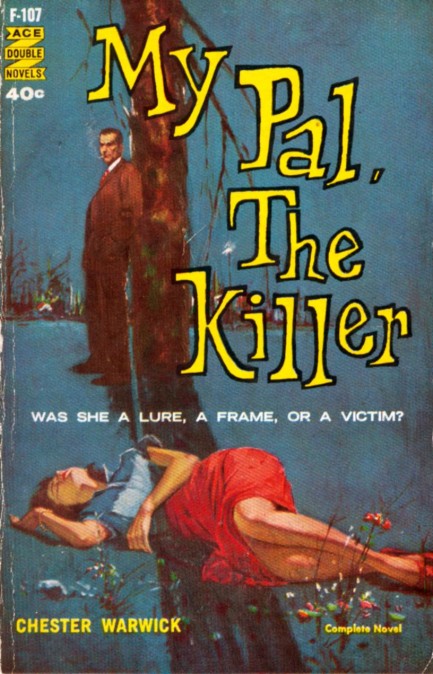
The thieving business runs hot and cold, and it reaches freezing depths when your girlfriend starts giving you a hard time about your earnings. Actually, let's not restrict that to thieving. It's true whatever your chosen field happens to be. John Trinian's Scratch a Thief was published in 1961 as an Ace Double Novel with Chester Warwick's My Pal, The Killer. Scratch a Thief later became a movie with Alain Delon and Ann-Margret in the leads, and at that time was retitled Once a Thief and credited to Trinian's pseudonym Zekail Marko. In reality, he was neither Trinian nor Marko, but Marvin Schmoker. So, you can understand the name changes. High school must have been hell for the guy. We haven't read him yet but we'll get around to it. And maybe to Chester Warwick too. You never know. But we'll for sure get around to the movie.
 Inside Story goes where other tabloids tread—then claims not to have gone there. 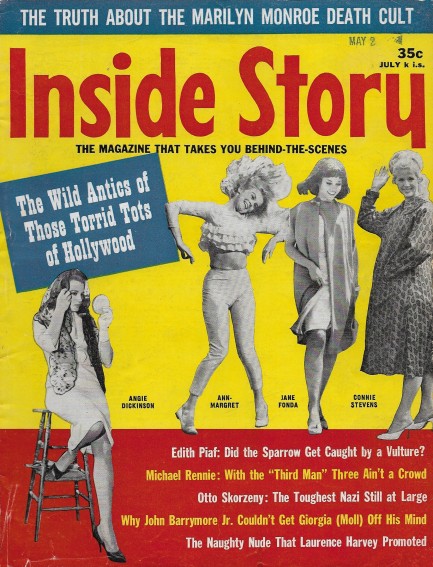
It's been a few years since we posted an issue of Inside Story, but we don't run out of tabloids, we just run out of time to scan them. Today, though, there's time aplenty, so above you see an issue that appeared this month in 1963 with a cover touting a feature on the new generation of young actresses in Hollywood taking over from Brigitte Bardot, Kim Novak, and Marilyn Monroe. At the time, Bardot was twenty-nine and Novak was thirty-five. Those aren't exactly geriatric years for actresses, even back then, but Inside Story said there was a young new guard: Angie Dickinson, Ann-Margret, Jane Fonda, Connie Stevens, Tuesday Weld, and Julie Newmar. Dickinson was actually older than both Bardot and Novak, but we get the general point.
Later in the issue there's a story dedicated to Monroe that describes her fans as a death cult. The interesting aspect of this is that the author Kevin Flaherty accuses people of obsessing over Monroe—while himself obsessing over Monroe. The gist of his article is that a cottage industry of films, books, and magazine articles were cashing in on her suicide, which had occurred the previous August. This was, of course, shaky ground for any tabloid to tread upon, as they all made their profits via unauthorized articles about various celebrities, which one could define as exploitative by nature. But never let the facts get in the way of a good story angle.
Flaherty tells readers that Monroe's life was marred by abandonment, depression, and rape, and suggests that if she had been given a little peace by constantly clamoring fans and intrusive reporters she might not have taken that fatal dose of pills. We think it's just as valid to conclude that without stardom she wouldn't have lasted as long as she did. Since she isn't around anymore to speak for herself (she'd be ninety-six this year), we view her on the terms she chose. She started as a model and worked hard to become an actress, and we think those achievements are far more important than what she had no control over. But there will always be debate over Monroe's legacy, and Inside Story shows that the discussion was already in full swing. Twenty-plus scans below.
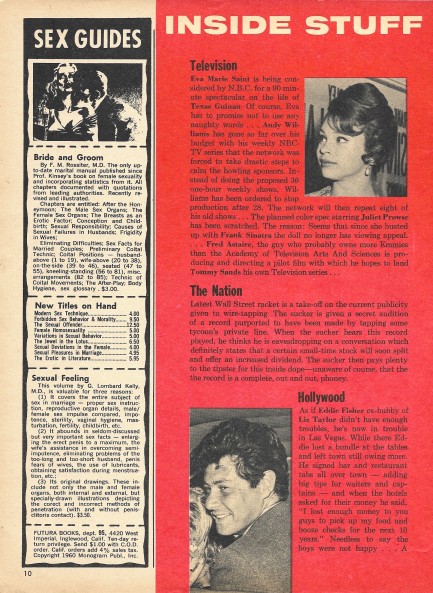 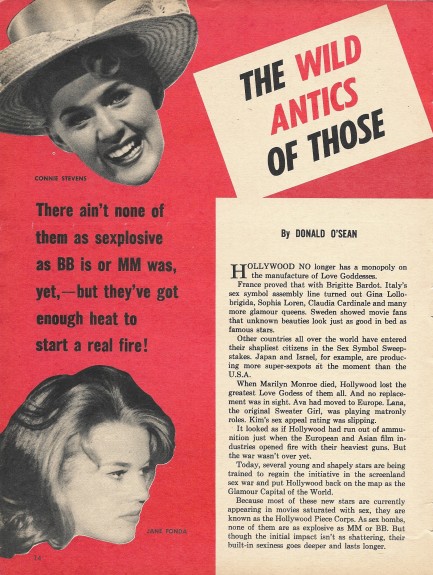 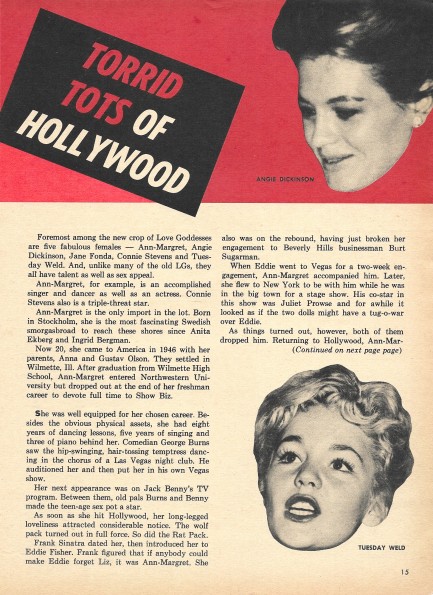 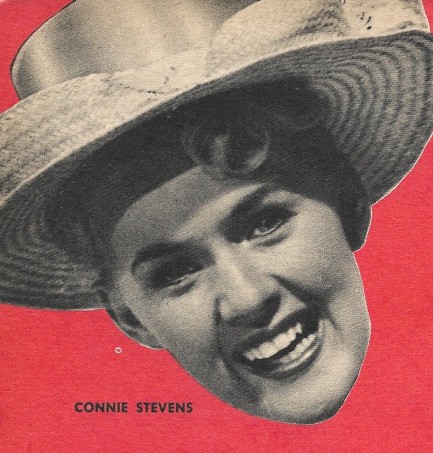 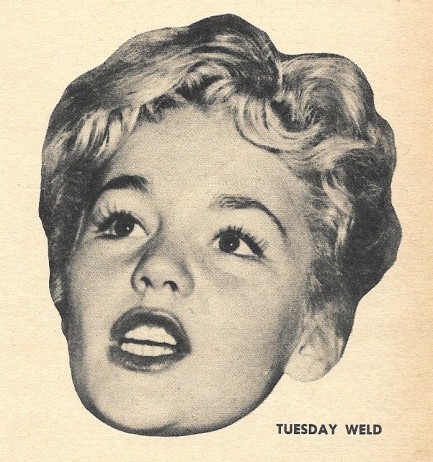 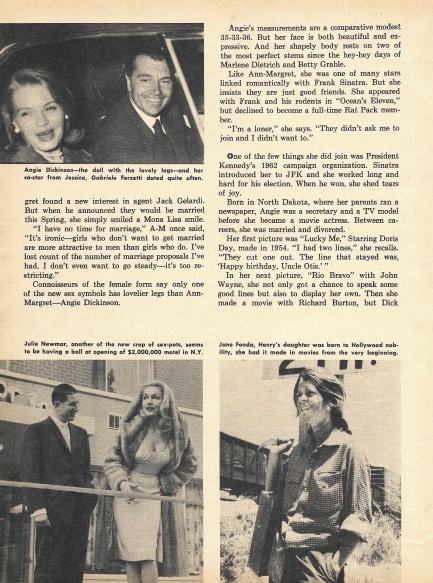 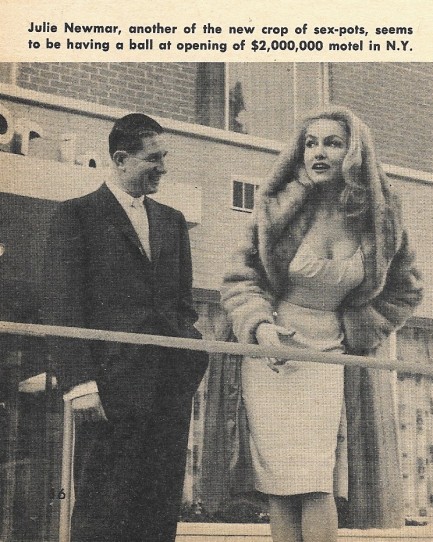 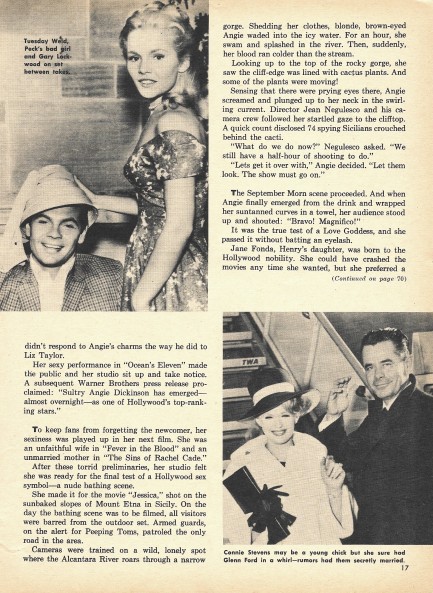 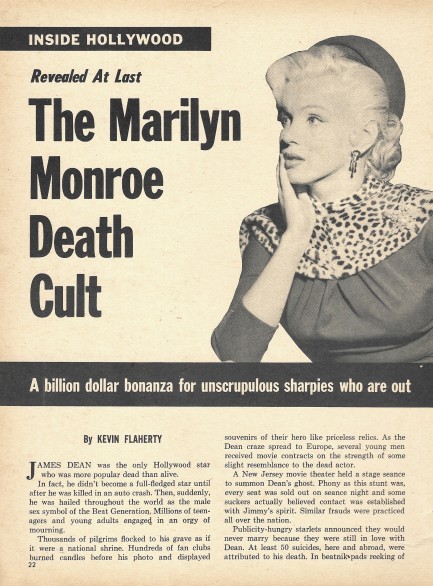 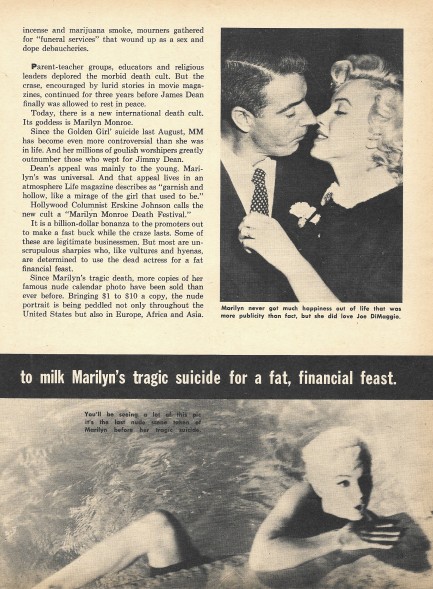 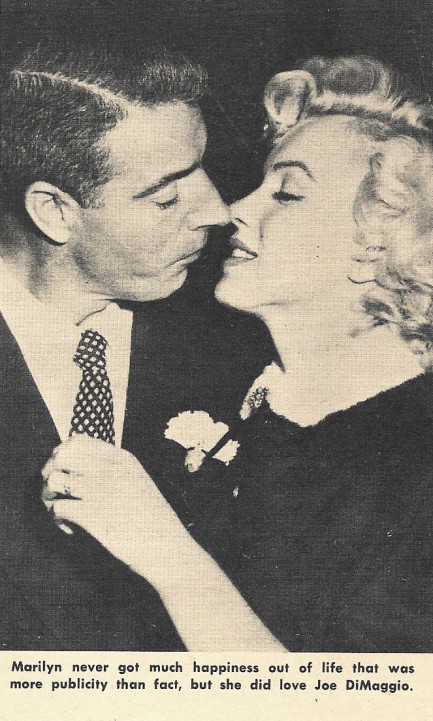 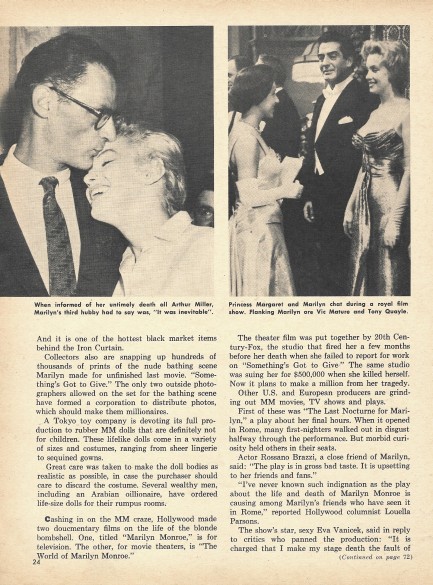 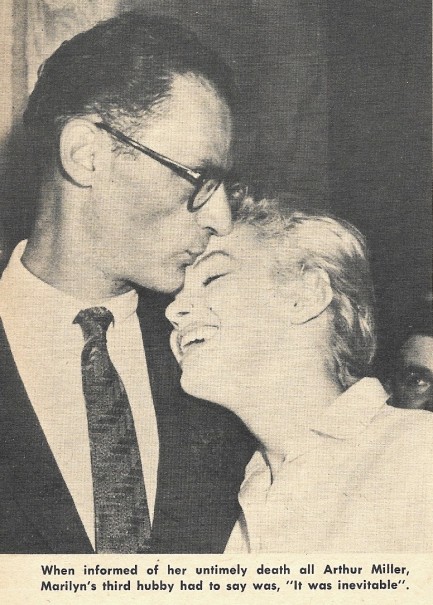 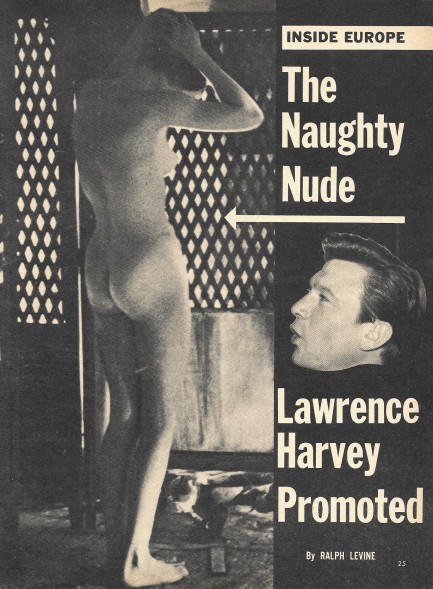 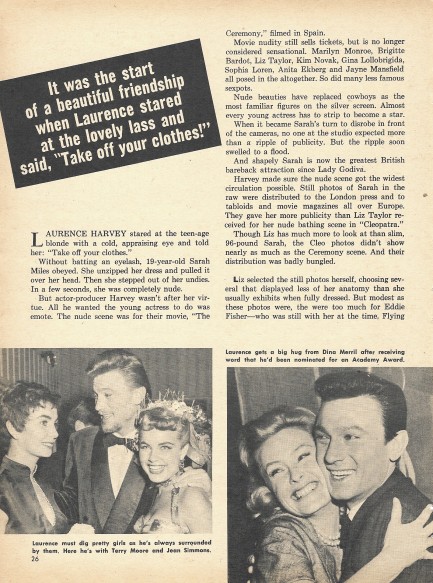  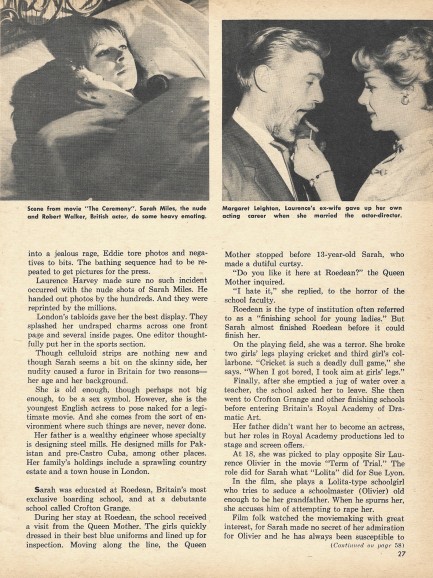 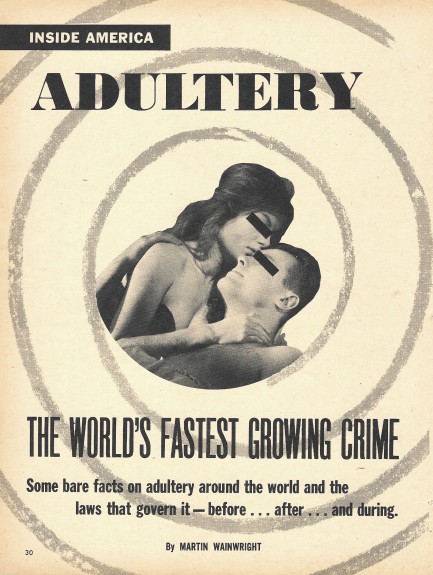 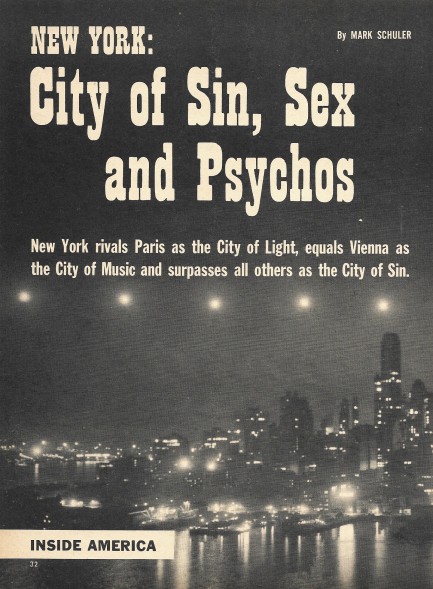 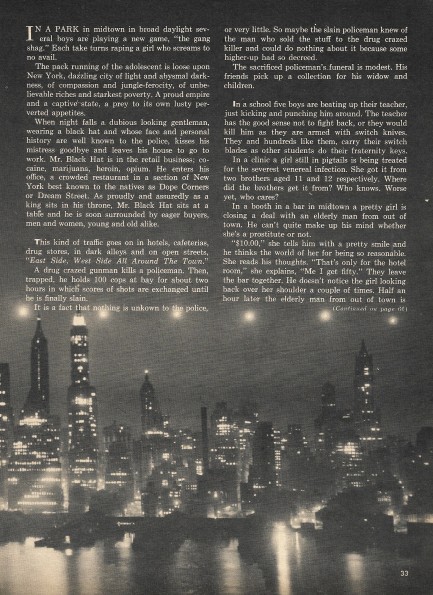 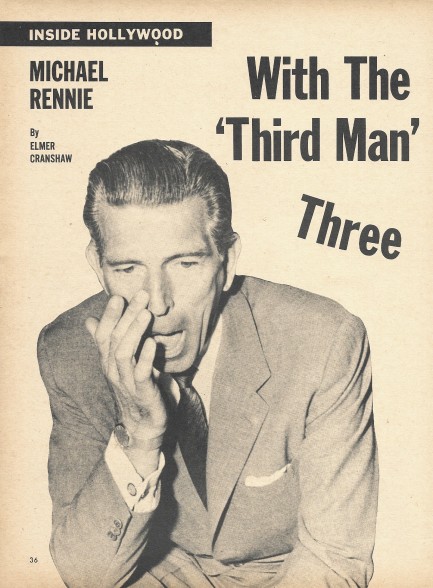 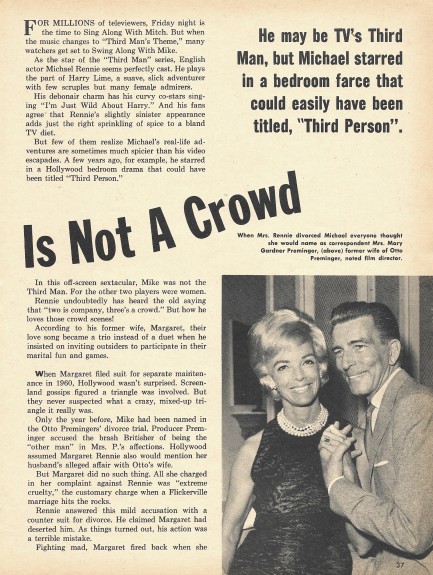 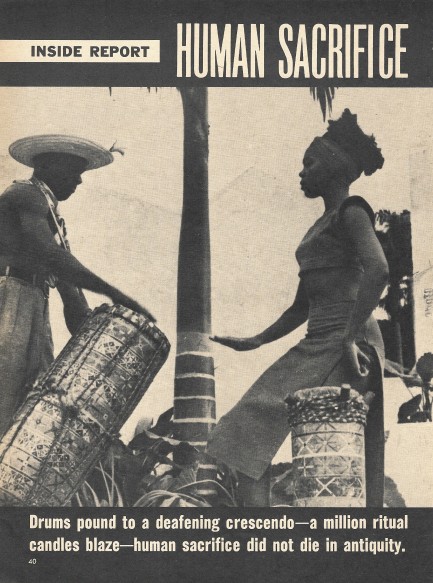 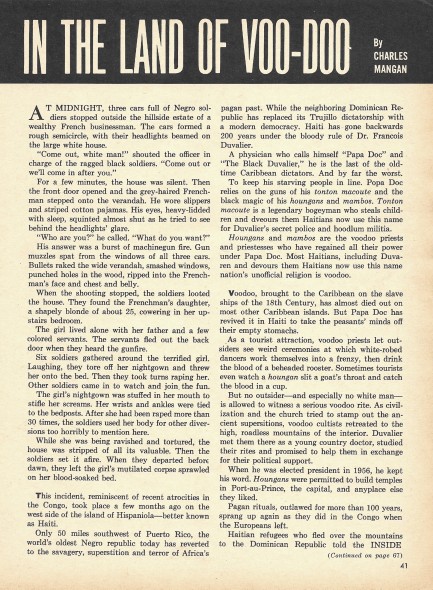 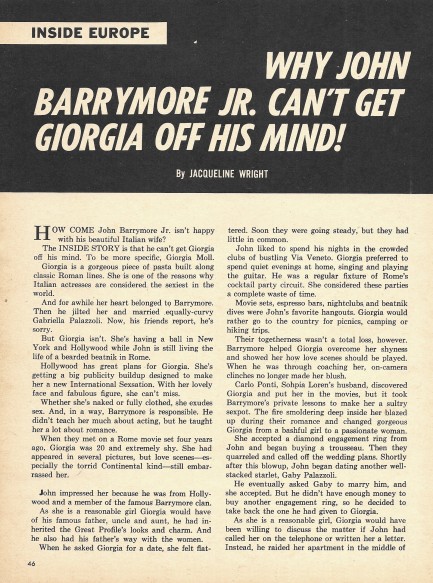 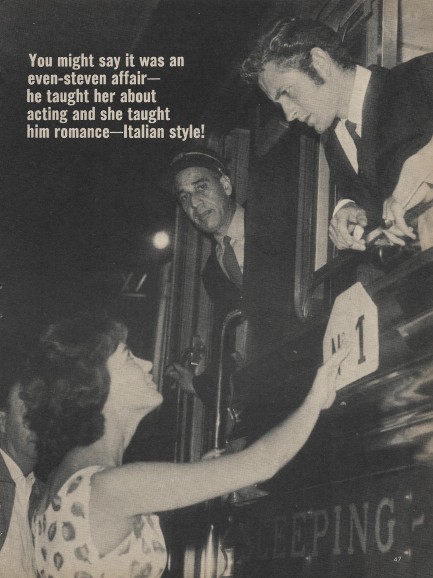 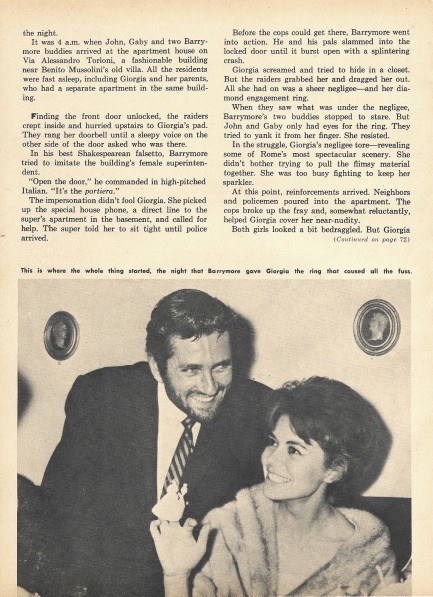 
 Ann-Margret's reputation was a problem. But her reputation for what? 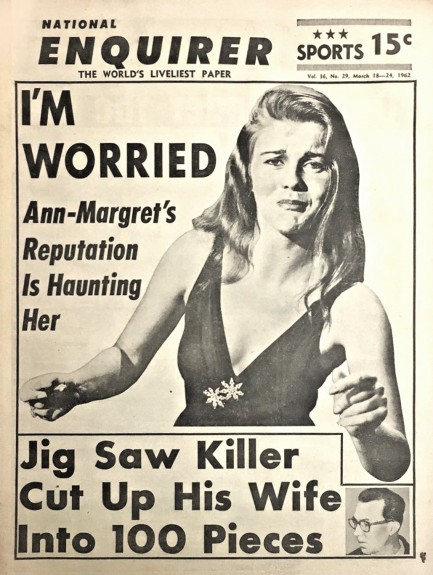
This should spice up your Friday. Above you see Swedish bombshell Ann-Margret on the cover of a National Enquirer published today in 1962. The editors wanted to match Ann's face with the, “I'm worried,” header, and used a promo shot of her dancing. Wild facial expressions were a specialty of hers. Winks, grins, grimaces, and more were her stock in trade, deftly demonstrated in the shot below. But regarding the above image, we don't think she looks particularly worried. Pained, possibly. Worried, no. We didn't buy this item, so we can't tell you for sure what she's supposed to be worried about, but considering the year, the article probably discusses her trying to make the transition from singer/dancer to serious actress. It was something she talked about in interviews. In the end she managed it easily. On the other hand, maybe Enquirer is hinting at something else entirely. Either way, the photo is rare. 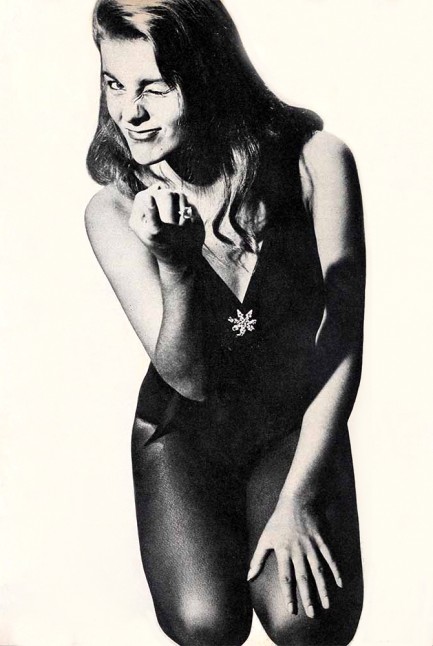
 All the best people showed up. 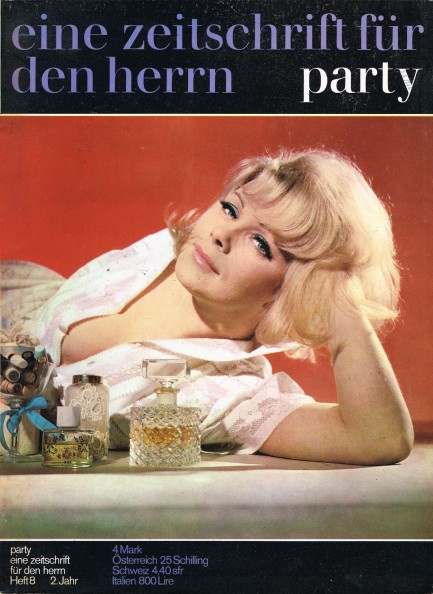
The West German pop culture and celeb magazine Party, which was produced in Hannover by Lehning Press, is an obscure publication. It's very vivid, with bright color, many full page photos, and many film celebrities represented. Equal time is given to unknowns too, for example, the cover features Annelies Niessner, who was... we have no idea, and inside a color page is given to Cornelie, identified only as a “millionärstochter geht eigene wege,” a millionaire's daughter who goes her own way.
In terms of celebs you get Carol Lynley, Jane Russell, Sandra Dee, Stella Stevens, Laya Raki, a beautiful portrait of Jane Fonda, numerous shots of Ursula Andress, and many others. This publication didn't waste words, even on the copyright date. The cover tells us this is issue eight, so we're going to say it came in August, and we're thinking it's from 1967. Though it may be short on info, Party is an appropriate name, because it's a very fun magazine. We have several more issues, so look for those later. 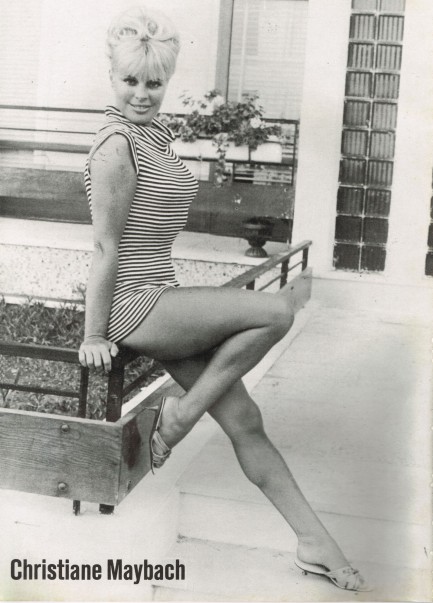   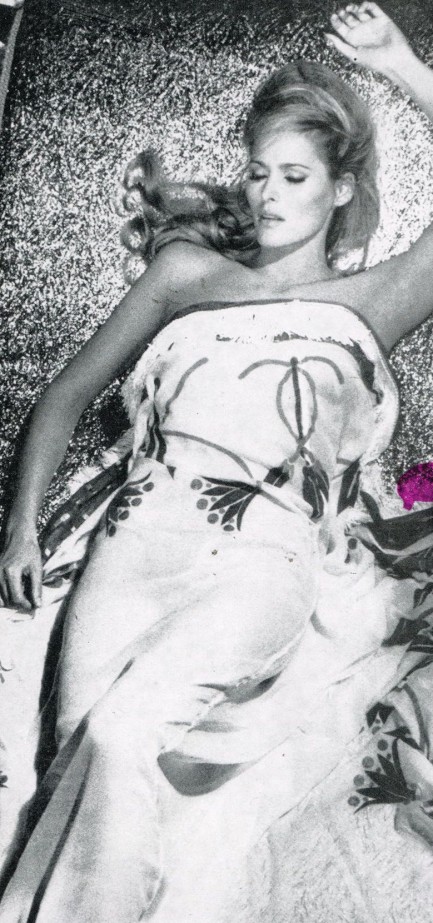 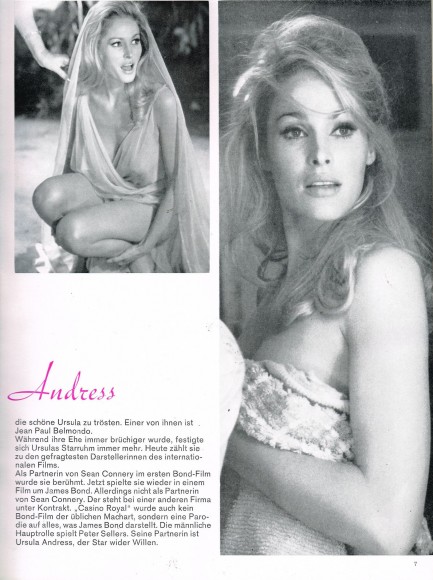   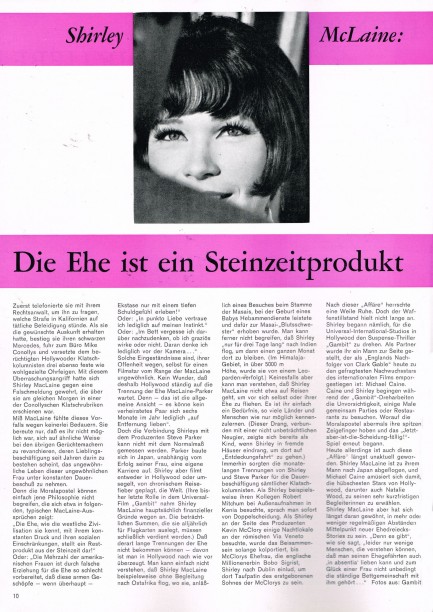 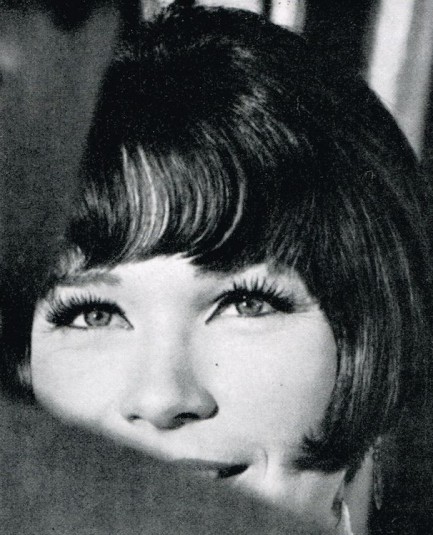 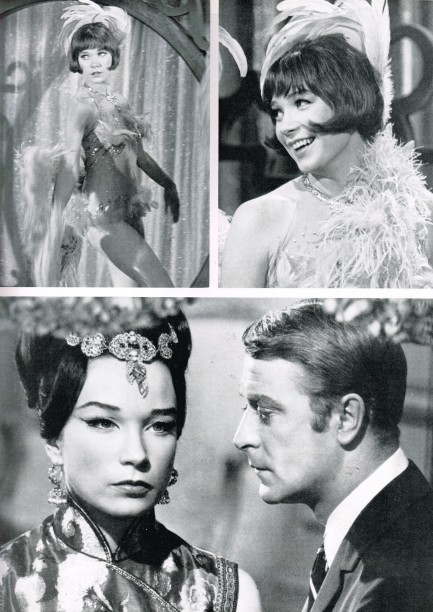 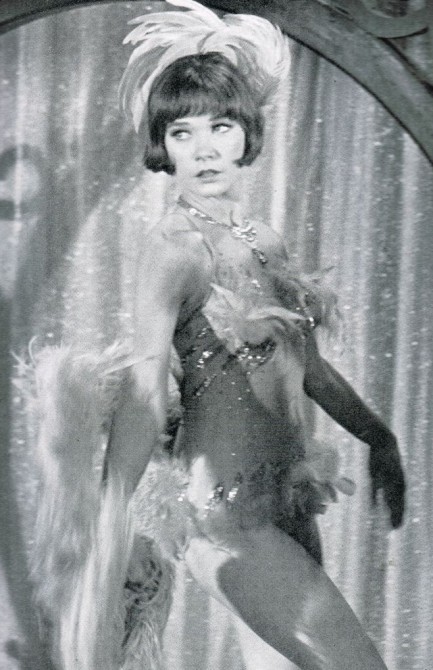 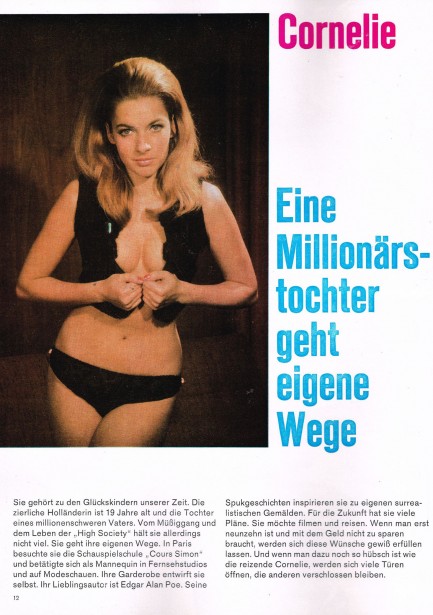   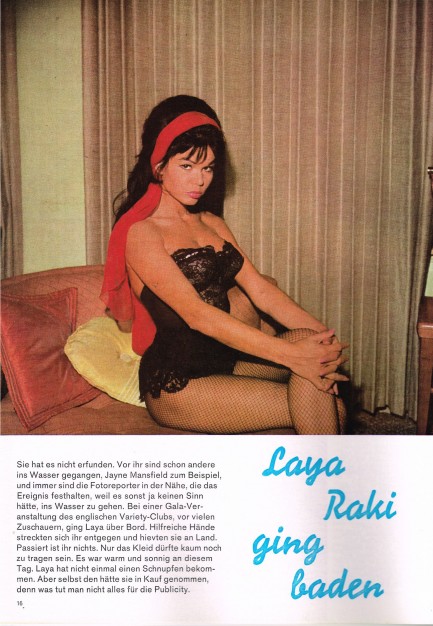  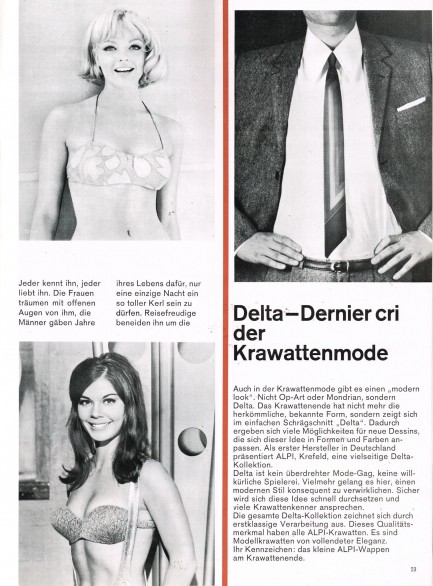 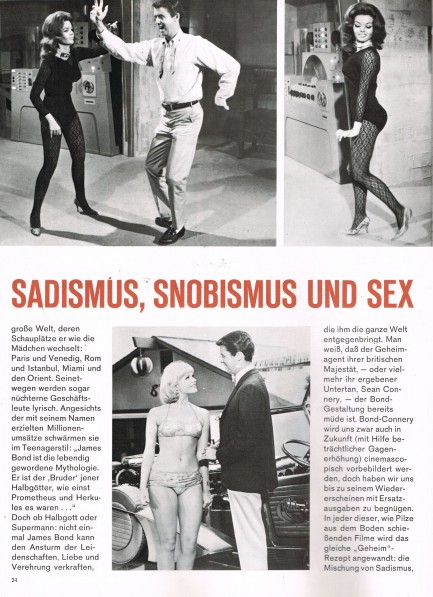 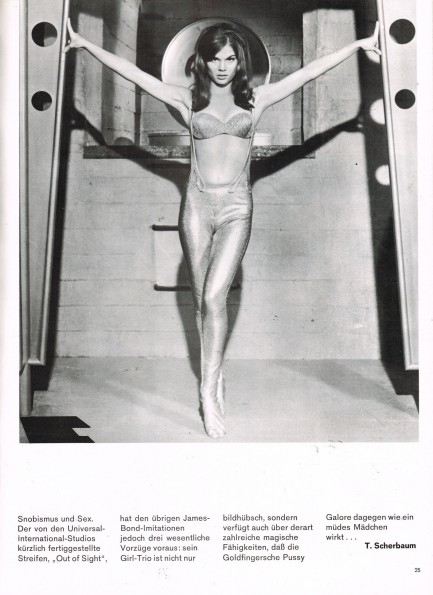 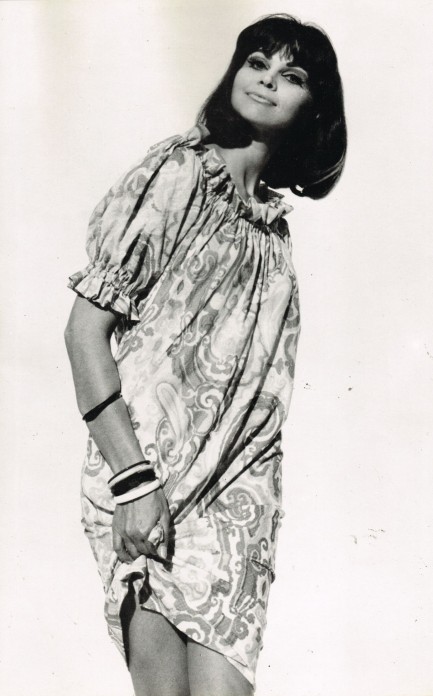 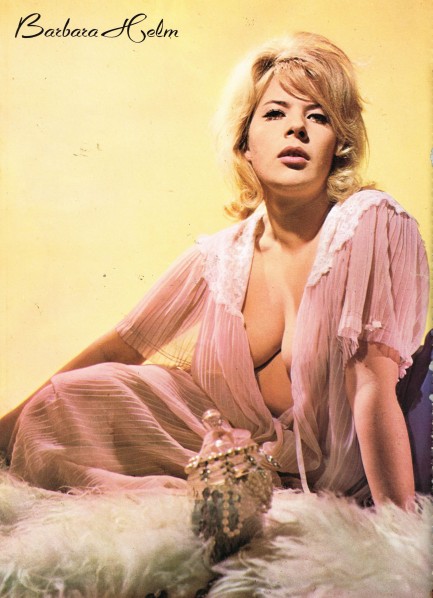 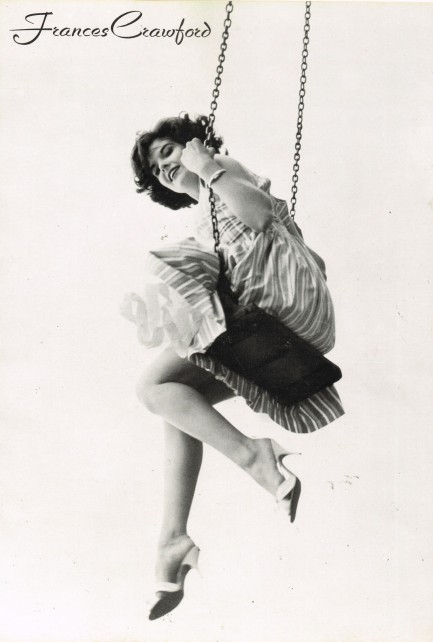   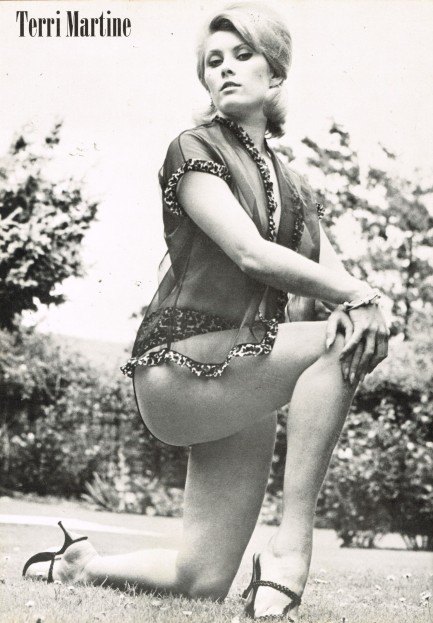  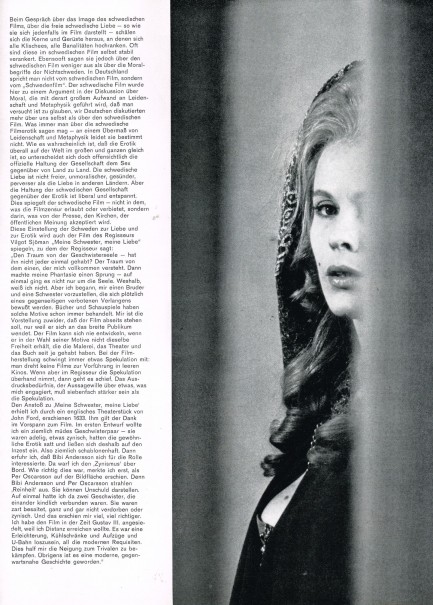 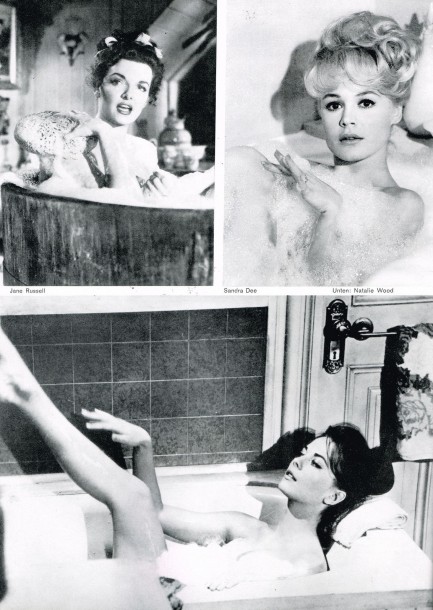  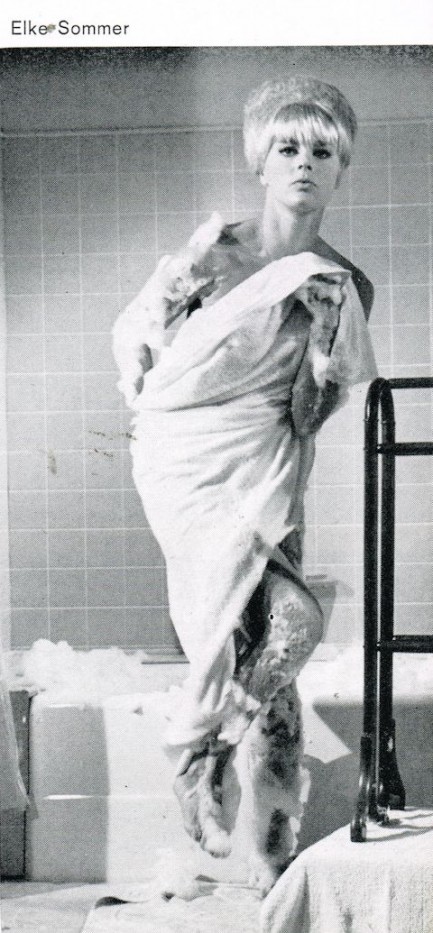 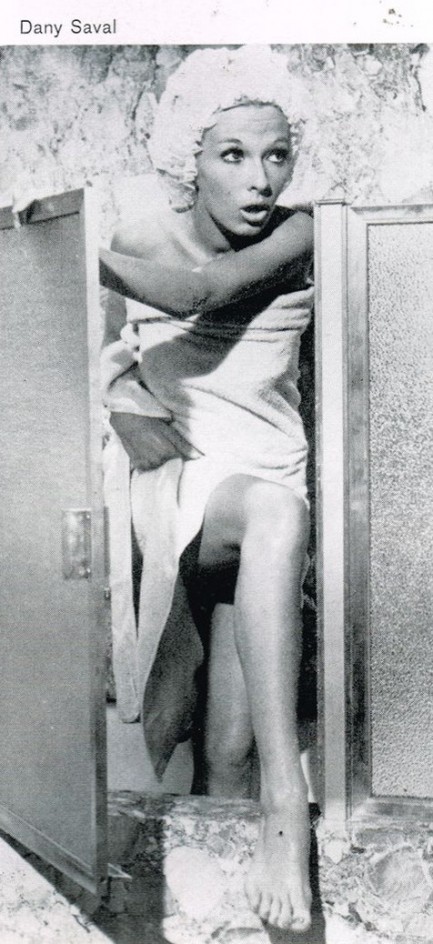 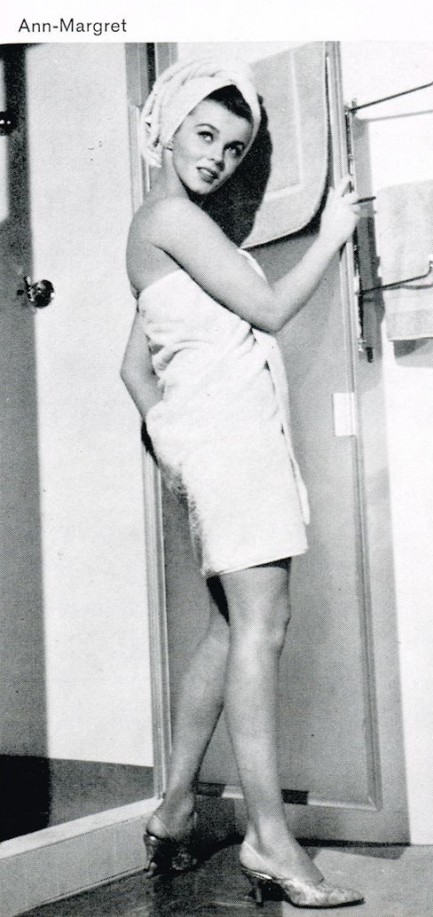 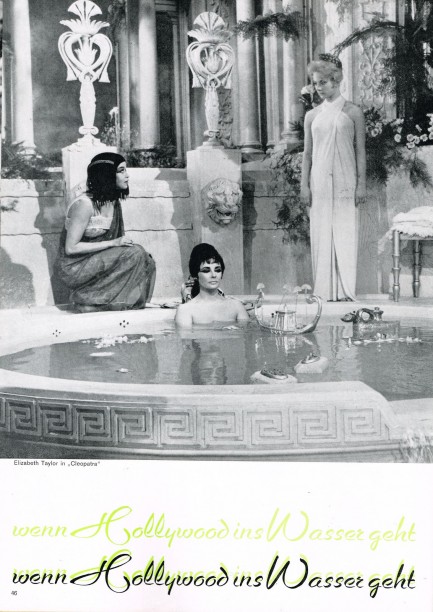 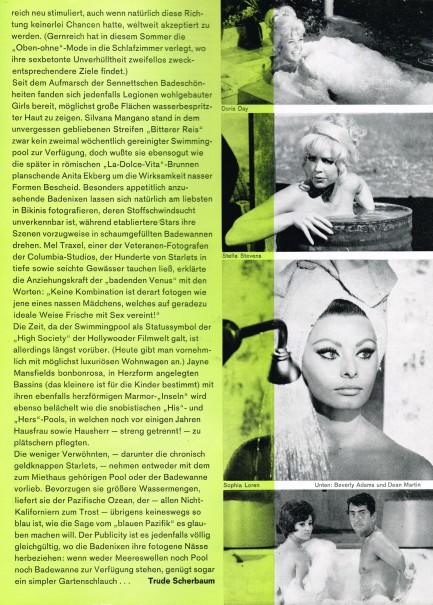 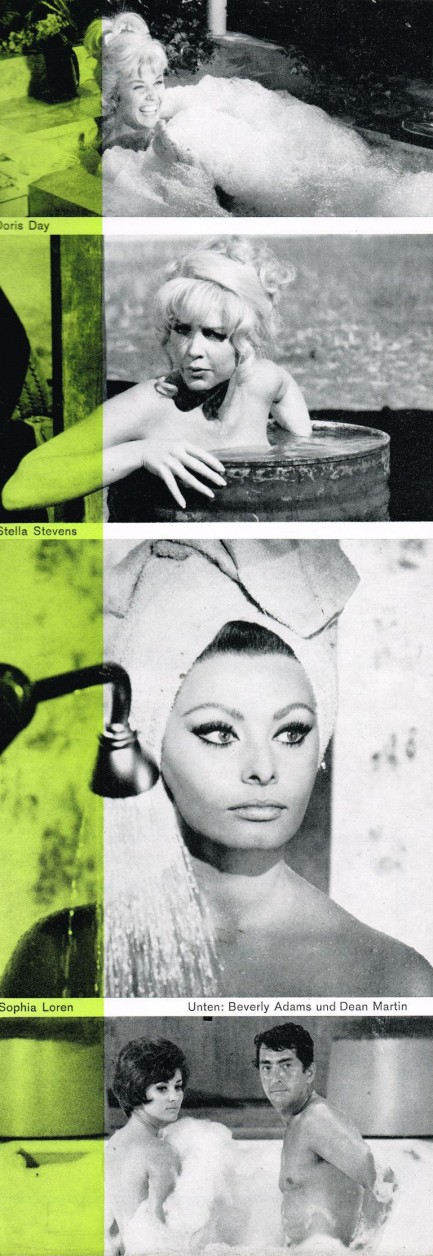 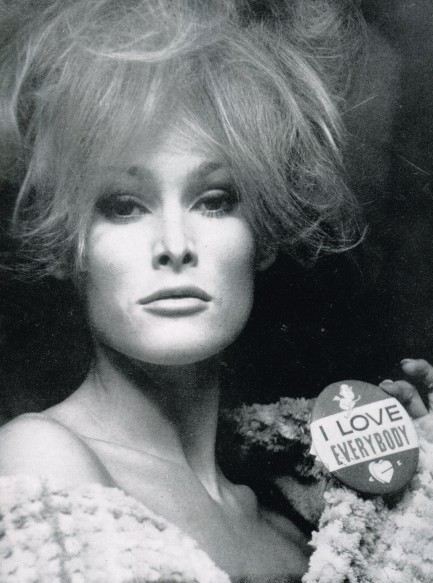 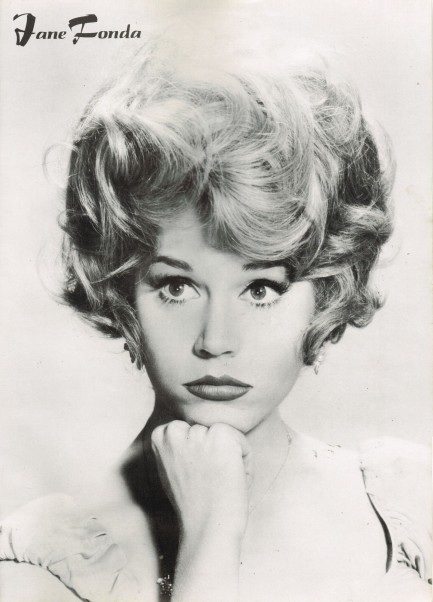 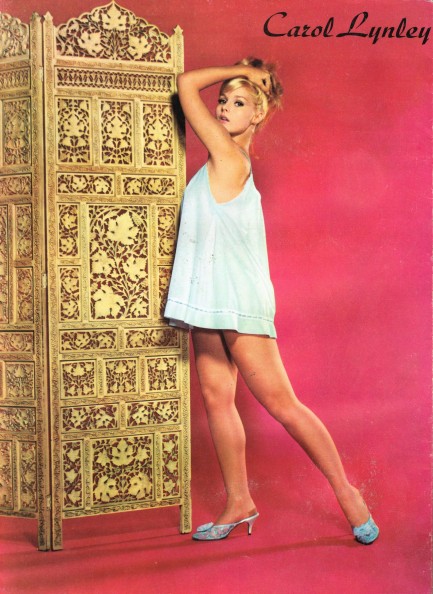
 I hereby decree that granny panties shall henceforth be considered sexy! 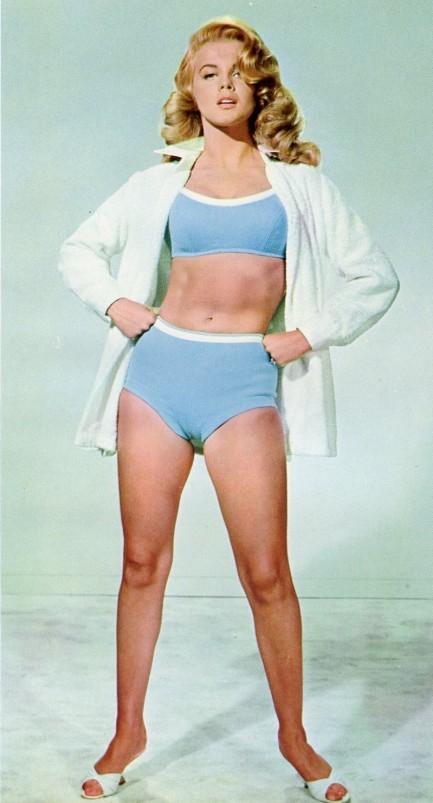
We wonder if granny panties will ever come back. They may. The fashion industry brought high-waisted jeans back and those were unflattering the first time around. Of course, some women look good in anything. This 1965 image of Swedish star Ann-Margret proves it. We have several entries on her in the website. Our favorites are here and here.
 Let the record show that Ann-Margret can sell anything. 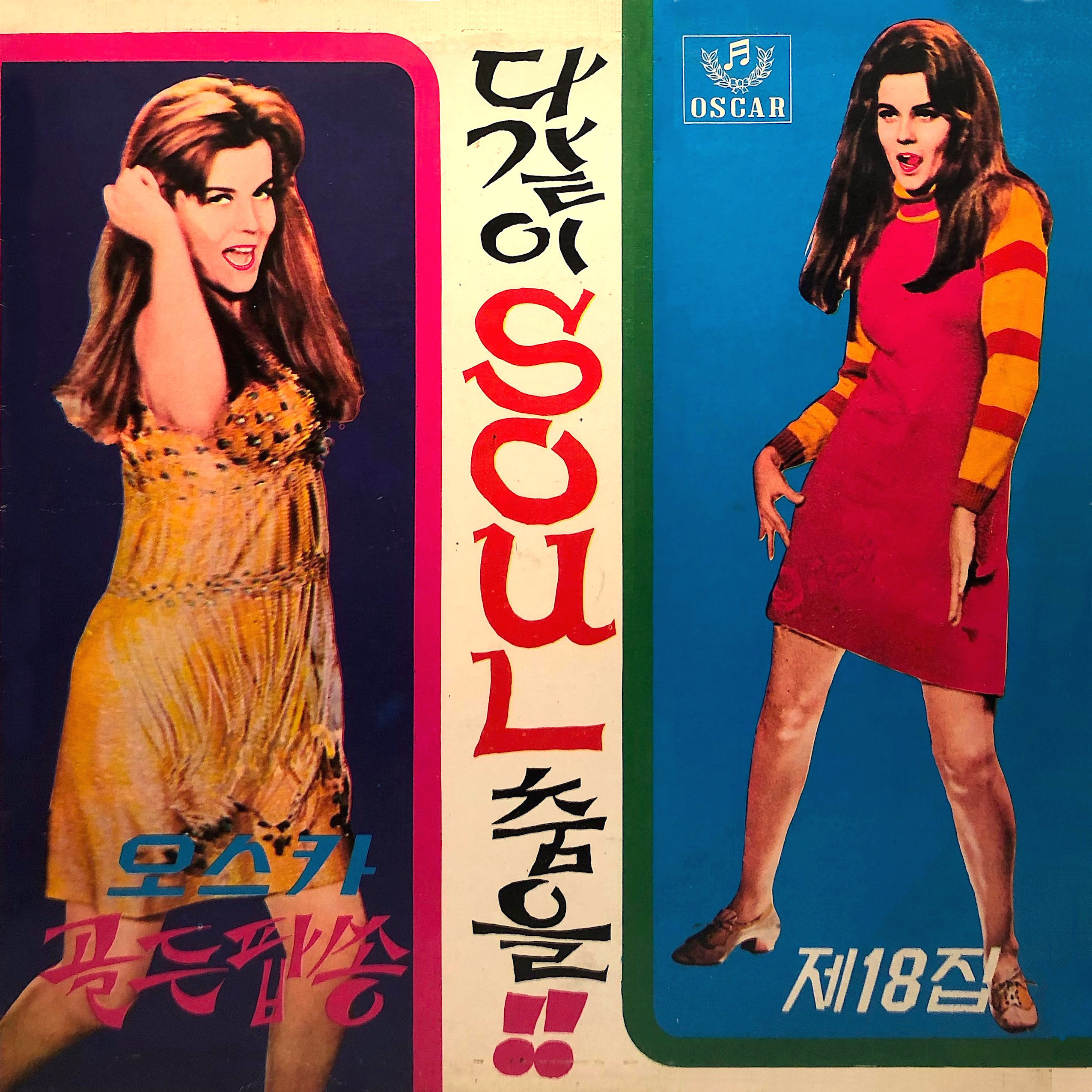
We don't think of Swedish actress Ann-Margret as a poster girl for soul music, but a South Korean label called the Oscar Record Co. thought differently and decided to plop her on the cover of their 1971 compilation disc Soul. Oscar wasn't the only label to do this. In fact, it wasn't even the only label from South Korea to do it. Tae Do, Top Hit, Paramount, and Joong Ahng all borrowed Ann-Margret to front compilation discs too.
But this particular platter is probably the best of the lot. It has Tom Jones. Johnny Rivers, Wilson Pickett, The Animals doing “Don't Let Me Be Misunderstood,” Mitch Ryder, The Rolling Stones doing “Satisfaction” and “Paint It Black,” Cliff Richard, James Brown, and The Mamas and Papas doing “California Dreamin',” our personal favorite of the extensive offerings. You also get two songs from The Supremes, so all in all, it's a top quality collection.
The cover was posted last month at the album art blog lpcoverlover.com, a worthwhile stop for vintage vinyl art. Their scan was a little crooked, so we squared it up, separated the two Ann-Margret images, and uploaded them below. We kept the full cover scan at large size, so if you want it you'll find that it's 2500 pixels wide, pretty much twice the size of an actual LP sleeve, suitable for framing. Help yourself, and thank lpcoverlover.
 Delon and company play cops and robbers in the City by the Bay. 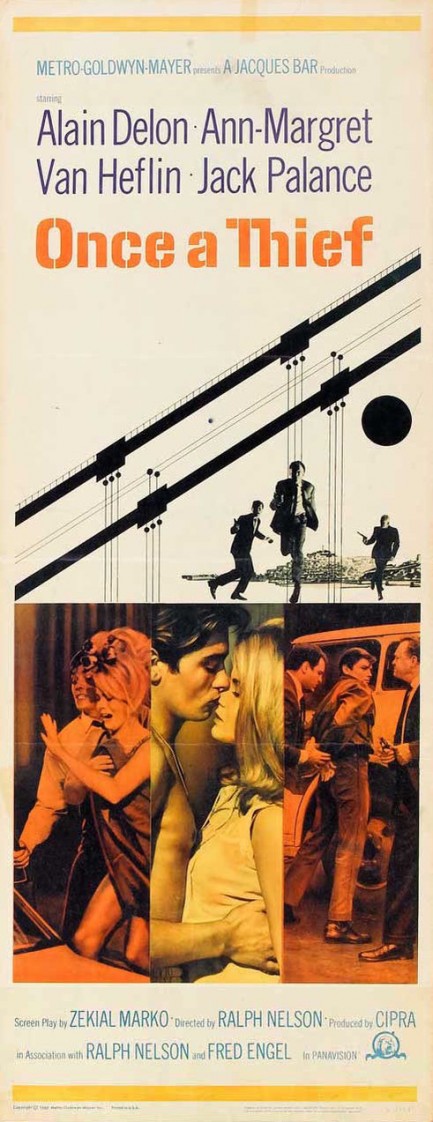
Once a Thief opens with a San Francisco nightclub drummer playing a cracking solo, cymbal crashes synched to quick edits, and we immediately think we're in for some sort of revolutionary beat generation noir, with the edgy rhythms and nervous energy that idea entails. But the movie quickly subsides to conventional pacing, telling the story of a former thief gone straight suspected of a recent murder, and the cop determined to put him away—guilty or innocent. Alain Delon plays crook-turned-family man Eddie, and Ann-Margret is his wife Kristine. Even if the movie doesn't live up to its jazzy opening, getting Sweden's hottest actress and France's hottest actor together should be a can't-miss proposition.
Though Eddie is innocent of the murder, police harassment costs him his job. But when you're broke you can always count on family—to make things worse, that is. Eddie's criminal brother shows up and wants help with a bank robbery. After a few fraternal preliminaries, Eddie decides to partner up with his erratic bro, which is when his troubles really start, because his darker nature emerges and it isn't a pretty sight. Ann-Margret, working from the hysteria-as-acting playbook, is not pleased with these developments and over-emotes her displeasure at every opportunity. Even if criminal conspiracy doesn't do Eddie in, marital strife might.
Once a Thief oozes cool, but in the end it's a middling heist drama that asks a bit too much of its principals. It didn't do well in 1965, and we suspect it'll be the least liked offering at Noir City. Audiences may respond to a few aspects, though: there are some nice San Fran exteriors, Lalo Schifrin's soundtrack is top notch, and character actor John Davis Chandler knocks his role of the druggy hepcat villain Jimmy Sargatanas out of the park, over the promenade, and into McCovey Cove. His line, “I don't dig women,” paired with a sneer and a fatal gunshot, will probably bring the house down. As for Delon and Ann-Margret, well, at least they look good. 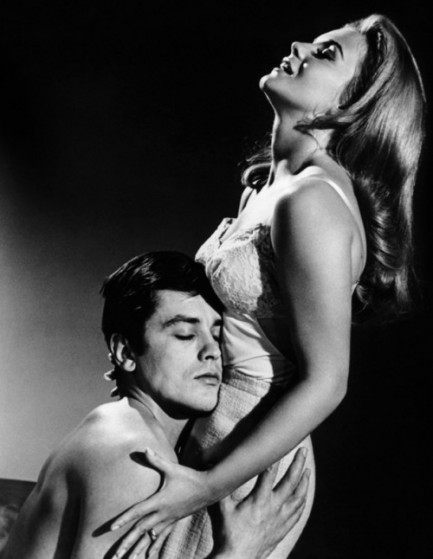 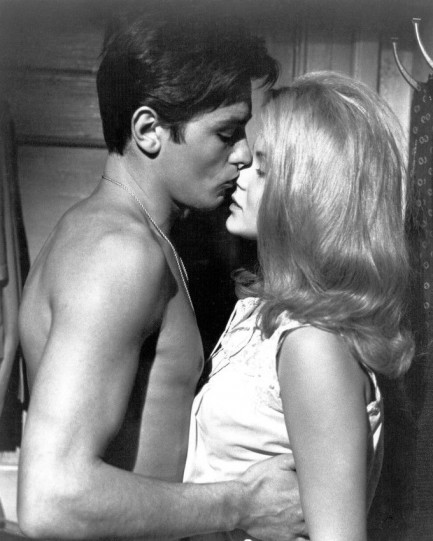 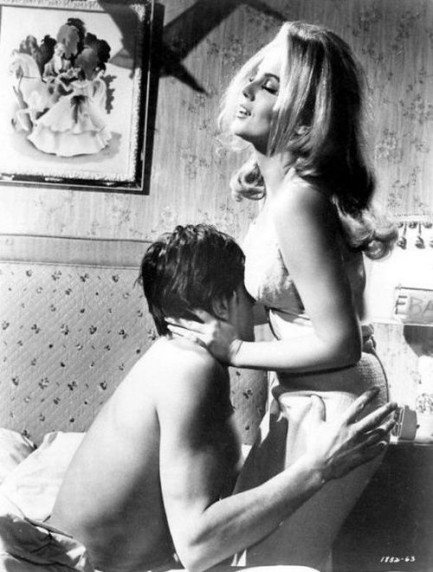
 This is nothing. Let me get loose and I'll really show you what I can do. 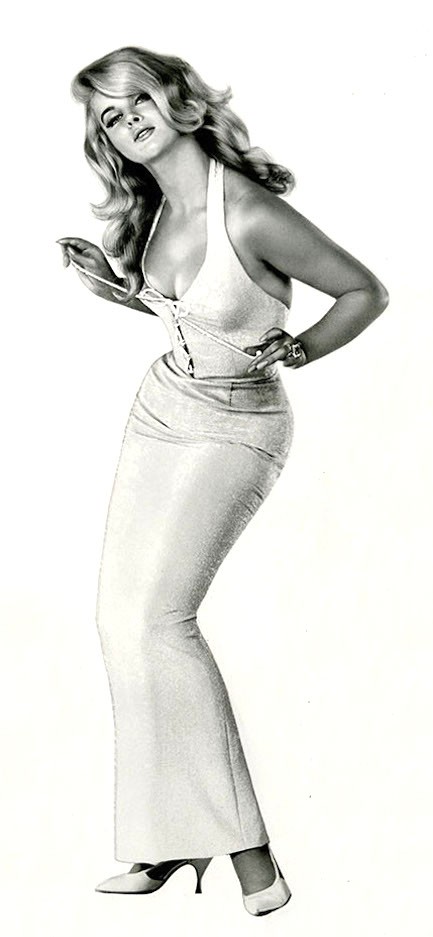
This really nice promo shot of a gyrating Ann-Margret was made to promote the film Bus Riley's Back in Town, about a sailor who returns from three years abroad to find that his love has married another man. Notice how she hints at untying that laced up top of hers. 1965 on this unique image.

|
 |

The headlines that mattered yesteryear.
1945—Churchill Given the Sack
In spite of admiring Winston Churchill as a great wartime leader, Britons elect
Clement Attlee the nation's new prime minister in a sweeping victory for the Labour Party over the Conservatives. 1952—Evita Peron Dies
Eva Duarte de Peron, aka Evita, wife of the president of the Argentine Republic, dies from cancer at age 33. Evita had brought the working classes into a position of political power never witnessed before, but was hated by the nation's powerful military class. She is lain to rest in Milan, Italy in a secret grave under a nun's name, but is eventually returned to Argentina for reburial beside her husband in 1974. 1943—Mussolini Calls It Quits
Italian dictator Benito Mussolini steps down as head of the armed forces and the government. It soon becomes clear that Il Duce did not relinquish power voluntarily, but was forced to resign after former Fascist colleagues turned against him. He is later installed by Germany as leader of the Italian Social Republic in the north of the country, but is killed by partisans in 1945. 1915—Ship Capsizes on Lake Michigan
During an outing arranged by Western Electric Co. for its employees and their families, the passenger ship Eastland capsizes in Lake Michigan due to unequal weight distribution. 844 people die, including all the members of 22 different families. 1980—Peter Sellers Dies
British movie star Peter Sellers, whose roles in Dr. Strangelove, Being There and the Pink Panther films established him as the greatest comedic actor of his generation, dies of a heart attack at age fifty-four.
|

|
|

It's easy. We have an uploader that makes it a snap. Use it to submit your art, text, header, and subhead. Your post can be funny, serious, or anything in between, as long as it's vintage pulp. You'll get a byline and experience the fleeting pride of free authorship. We'll edit your post for typos, but the rest is up to you. Click here to give us your best shot.

|
|





































